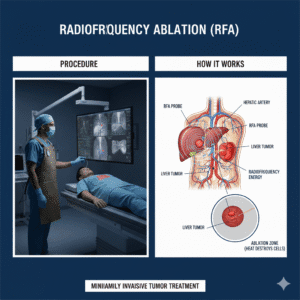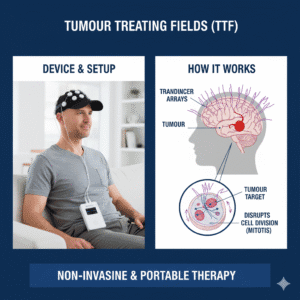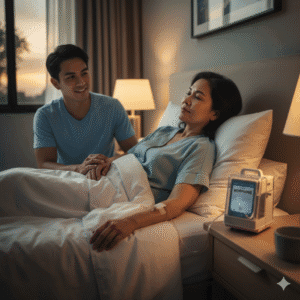
Surface Guided Radiotherapy (SGRT)
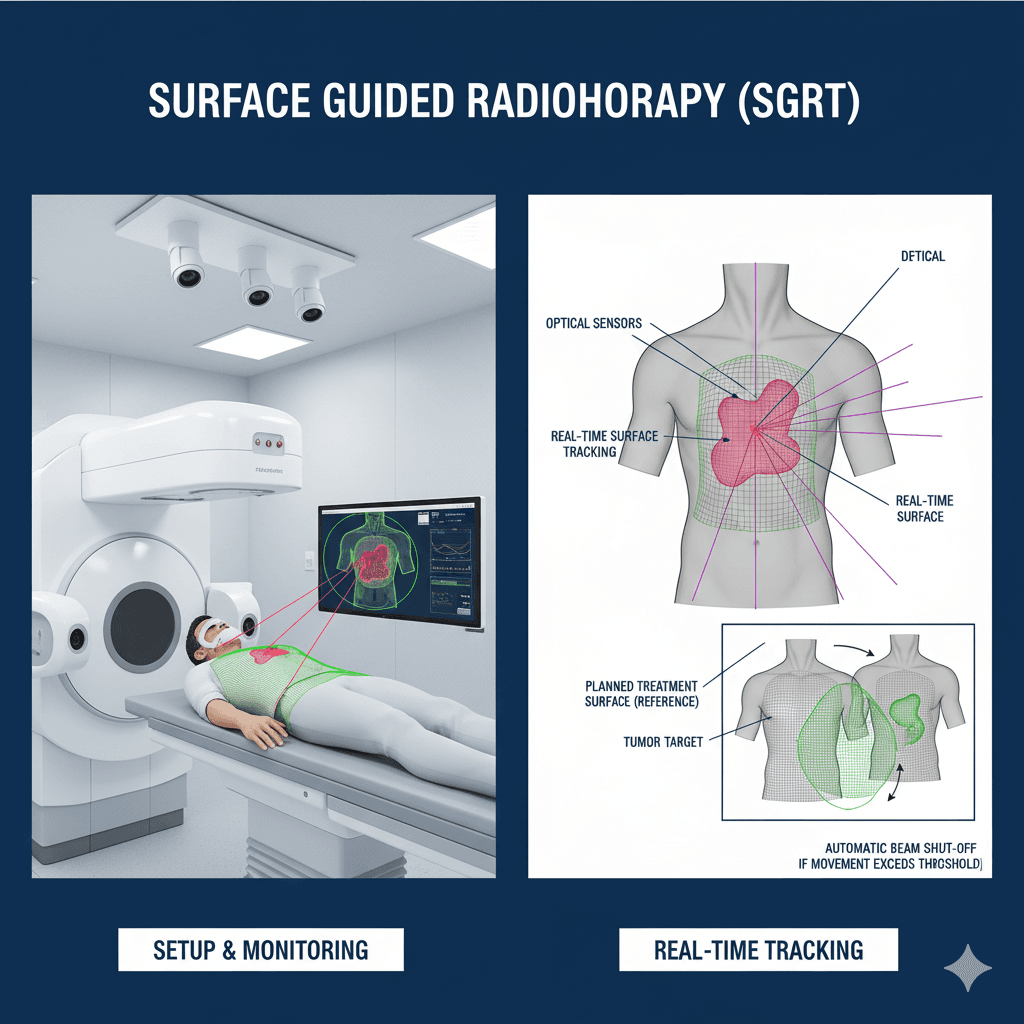
Q1: What is Surface Guided Radiotherapy (SGRT)?
Surface Guided Radiotherapy (SGRT) is an advanced technique used in radiation therapy that relies on real-time monitoring of the patient’s skin surface to ensure accurate delivery of radiation. By tracking the patient’s position and movement during treatment, SGRT helps to precisely target the tumor while protecting healthy tissues and organs from unnecessary radiation.
Q2: How does SGRT work?
SGRT uses specialized cameras and software to monitor the position of the patient’s skin surface. The system projects a light pattern onto the patient’s skin, creating a 3D model of their body. During treatment, this model is continuously compared to the treatment plan. If the patient moves or the position changes, the system can automatically pause the radiation delivery until the patient is correctly repositioned. This ensures that radiation is delivered exactly where it’s needed.
Q3: What are the benefits of SGRT?
The benefits of SGRT include:
- Increased accuracy: SGRT ensures that radiation is precisely targeted to the tumor, minimizing exposure to surrounding healthy tissues.
- Improved safety: By continuously monitoring the patient’s position, SGRT reduces the risk of radiation being delivered to the wrong area.
- Patient comfort: SGRT can eliminate the need for uncomfortable immobilization devices, as it allows for natural breathing and slight movements during treatment.
- Versatility: SGRT can be used for a variety of cancers, including breast cancer, brain tumors, and cancers in the head and neck, where precision is crucial.
Q4: When is SGRT used in radiotherapy?
SGRT is used in cases where precise targeting of the tumor is essential, especially when the tumor is close to critical structures or organs. It is commonly used for:
- Breast cancer: To protect the heart and lungs from radiation.
- Brain tumors: To ensure accurate targeting in a small, sensitive area.
- Head and neck cancers: Where slight movements could impact the accuracy of treatment.
- Stereotactic treatments: High-dose treatments where precision is critical.
Q5: How does SGRT compare to other radiotherapy techniques?
SGRT offers several advantages over traditional radiotherapy techniques that rely solely on tattoos or other fixed reference points. Unlike traditional methods, SGRT continuously tracks the patient’s position in real-time, which improves accuracy and safety. It also reduces the need for permanent skin marks (tattoos) and can enhance patient comfort by allowing for more natural breathing during treatment.
Q6. Which companies offer SGRT technology?
Several leading companies offer SGRT technology, each with its own system and features:
- Vision RT
- System: AlignRT
- Overview: Vision RT is a pioneer in SGRT technology and is best known for its AlignRT system. AlignRT uses three camera pods to create a 3D model of the patient’s surface, which is continuously monitored during treatment. This system is widely used for its accuracy and ability to eliminate the need for permanent tattoos in breast cancer patients.
- Key Features: Real-time tracking, tattoo-free treatment, breath-hold monitoring, compatibility with various radiotherapy techniques.
- C-RAD
- System: Sentinel 4DCT and Catalyst
- Overview: C-RAD offers two key systems for SGRT. The Sentinel 4DCT system is used for 4D CT imaging and radiotherapy planning, while the Catalyst system is used during treatment for real-time patient tracking and positioning. C-RAD’s systems are known for their versatility and integration with other radiotherapy equipment.
- Key Features: Real-time tracking, breath-hold monitoring, integration with major linear accelerators, advanced motion management.
- Varian Medical Systems
- System: Identify
- Overview: Varian, a major player in the radiotherapy field, offers the Identify system for SGRT. Identify combines surface tracking with other advanced technologies, such as radiofrequency identification (RFID), to ensure precise patient positioning and treatment accuracy. Varian’s system is designed for seamless integration with their radiation therapy equipment.
- Key Features: RFID integration, real-time surface tracking, improved patient safety, compatibility with Varian’s radiation therapy solutions.
- Brainlab
- System: ExacTrac Dynamic
- Overview: Brainlab’s ExacTrac Dynamic system combines surface tracking with X-ray verification for enhanced precision. It is particularly effective for treating tumors in challenging locations, such as the brain or spine, where high accuracy is crucial. The system allows for continuous patient monitoring and automatic corrections during treatment.
- Key Features: Surface and X-ray tracking, automatic patient repositioning, high precision for complex cases, integration with various treatment systems.
Q8: How do these SGRT systems differ from each other?
While all SGRT systems aim to improve the accuracy and safety of radiotherapy by tracking the patient’s surface, they differ in terms of technology, features, and integration with other equipment:
- Vision RT’s AlignRT focuses on creating a tattoo-free experience, particularly for breast cancer patients, with high accuracy in breath-hold treatments.
- C-RAD’s Catalyst and Sentinel systems offer comprehensive solutions for both imaging and treatment, with strong integration capabilities and advanced motion management.
- Varian’s Identify system integrates surface tracking with RFID technology, enhancing patient identification and positioning.
- Brainlab’s ExacTrac Dynamic combines surface tracking with X-ray verification, offering precise treatment for complex cases like brain and spine tumors.
Q7: What should I expect during a treatment session with SGRT?
During a treatment session with SGRT, you will be positioned on the treatment table, and the SGRT system will map your body’s surface. The cameras will monitor your position throughout the session. You will be asked to stay as still as possible, but minor movements, like breathing, are automatically accounted for. The treatment is painless and typically takes about the same amount of time as other forms of radiotherapy.
Q8: Is SGRT safe?
Yes, SGRT is safe and is used to enhance the safety and accuracy of radiotherapy. By ensuring that radiation is delivered precisely to the intended area, SGRT helps reduce the risk of side effects and damage to healthy tissues. The technique itself does not involve any additional radiation exposure.
Q9: How do I know if SGRT is right for me?
Your radiation oncologist will determine if SGRT is suitable for your treatment based on the location and type of your cancer, as well as your overall treatment plan. SGRT is often recommended for patients who need highly accurate radiation targeting or who have tumors near sensitive organs or structures.
If you have more questions about Surface Guided Radiotherapy or how it might be used in your treatment, feel free to contact us to understand how SGRT contributes to the effectiveness and safety of your radiotherapy.
Related Post


CyberKnife
August 6, 2024

Immunotherapy
August 7, 2024

MRI Linac
August 7, 2024
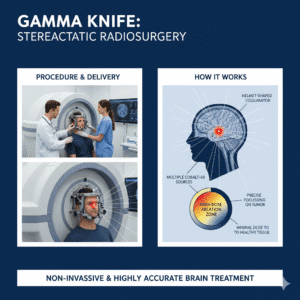
Gamma Knife
August 7, 2024
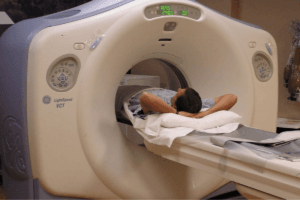
Cancer Screening
August 22, 2024
Gallery
Click below to book a clinic appointment
Ask More Questions Send Query On Email



